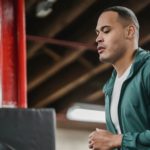The New York City Marathon has several water stations, some with snacks (fruit, crackers, gels) available along the race route. These are usually located every 1.5 to 2 miles.
It is vital that runners who plan to take part in the New York City Marathon experiment with their fueling options during their training so that they know what works best for their bodies come race day.
In this article, we’re going to break down what nutrition and hydration options are provided along the New York City Marathon route and where you can find them…
Note: All information provided in this article is subject to change.
Let’s begin with the hydration options available…

Water Stations On The New York City Marathon Course
Based on information gathered from the previous few years of the New York City Marathon there are water tables located every mile from mile 3/ 4.8km, all the way to mile 25/ 40km.
At the water stations on the New York City Marathon route you could find options like:
- Poland Spring Brand Natural Spring Water
- Gatorade
The water stations are on both sides of the course and liquids are handed out in recyclable cups.
Mile 17/ 27km will be The Poland Spring® Hydration Zone, here you can find water, sponges to squeeze the water on yourself, music, and an incredible pick-me-up atmosphere.
There are also 9 misting stations along the course in Brooklyn, Queens, Manhattan, and the Bronx to help cool you down.
Let’s have a look at the fueling options available…
Food Stations On The New York City Marathon Route
Mile 12 & 18/ 19km & 28km will offer Science in Sport Energy Gels. You’ll be able to spot these in advance by watching out for signage along the route.
At Mile 21 & 23/ 34km & 37km, you will be able to find bananas and other snacks like crackers.
Another unconventional fueling method along the route is actually from the spectators, a lot of runners who have completed the New York City Marathon say they are surprised by how much the spectators hand out… they hand out options like cut-up banana slices, nuts, salt pretzels, granola bars, orange slices.
Pro Tip: As a contestant of the NYC Marathon you are told that there is food in the start village, in the different areas where you start according to the color you’ve been assigned. This is true, there are bagels, tea, coffee, water, and Gatorade products but if you’re a picky eater or if food has run out, or if you have planned your specific nutrition race strategy then rather bring your meal. You could leave for Staten Island at 6 am but be in the 10 am start wave, meaning you could be running the marathon hungry if you don’t prepare.
It’s worth mentioning that there are 25 medical aid stations located approximately every mile starting at mile 3 and the finish.
Biofreeze™ Relief Zone
At mile 20/32km you can spot The Biofreeze™ Relief Zone, here they offer you self-apply spray or gel products for your muscle cramps of heavy/tired legs.
(Double-check the race course map closer to race day as their positioning could change)
Toilets Along The New York City Marathon Route
Porta-loos are located every mile from mile 3/4.8km to mile 25/40km.
Now that we know what will be available along the route of the New York City Marathon, let’s have a look at what is prohibited on race day…
What You’re Not Allowed To Bring To The New York City Marathon
- Any container that holds more than 1 liter
- Blankets
- Camelbaks
- Backpacks
- Vests with multiple pockets
- Selfie sticks
What Is The Best Way To Hydrate During The New York City Marathon?
Failing to prepare an adequate hydration strategy before the New York City Marathon can lead to unwanted consequences.
Dehydration can cause a decrease in your aerobic energy capacity, which will reduce your exercise endurance and muscle strength.
You should aim to consume 200-600ml of water an hour – This amount does vary between each individual and should be modified to thirst, intensity, and environmental conditions.
Hyponatremia (overhydration) remains a larger risk than dehydration so drink less and if thirsty you can increase your fluid intake slightly as you go.
We recommend that you learn how much water your body needs to consume to stay well-hydrated during your training period, especially on your long runs.
You can do this by checking your weight before and after a long run to make sure that you haven’t lost more than 2 percent of your body weight, and checking that your urine is not too concentrated.
With regards to the water stations and Gatorade provided, these are not in place so you stop to drink at every station.
Think about how much fluid you consumed during your long training runs, and try to replicate this intake when running the New York City Marathon, adjusting to thirst and environmental conditions.
Stop only for drinks and fuel as you have planned and practiced within your training.
Pro Tip: The BEST Marathon Hydration Strategy According To Experts

With that being said…
Should You Bring Your Own Water To The New York City Marathon?
You can bring your water to the New York City Marathon if you feel more comfortable carrying your small water bottle but know that the New York City Marathon allows fuel belts and handheld water bottles ONLY. You are not allowed Camelbaks or any type of hydration backpack.
Why You Can’t Run The New York City Marathon With a Hydration Pack?
The New York Road Runners (Organisers of the New York City Marathon) state that Camelbaks and hydration packs could easily conceal dangerous substances and therefore a ban was placed.
Tips For Efficiency At The New York City Marathon Drinks And Fuel Stations
- Stop only if it’s a part of your plan.
- Look ahead and start heading to the correct side of the road before you get there.
- Slow down for the volunteers to hand you your cup of water or Gatorade.
- Drink slowly.
- Be mindful of where you throw your trash along the route.
- Throw the leftover water on your neck or head… Especially in hot weather.



Comments are closed.